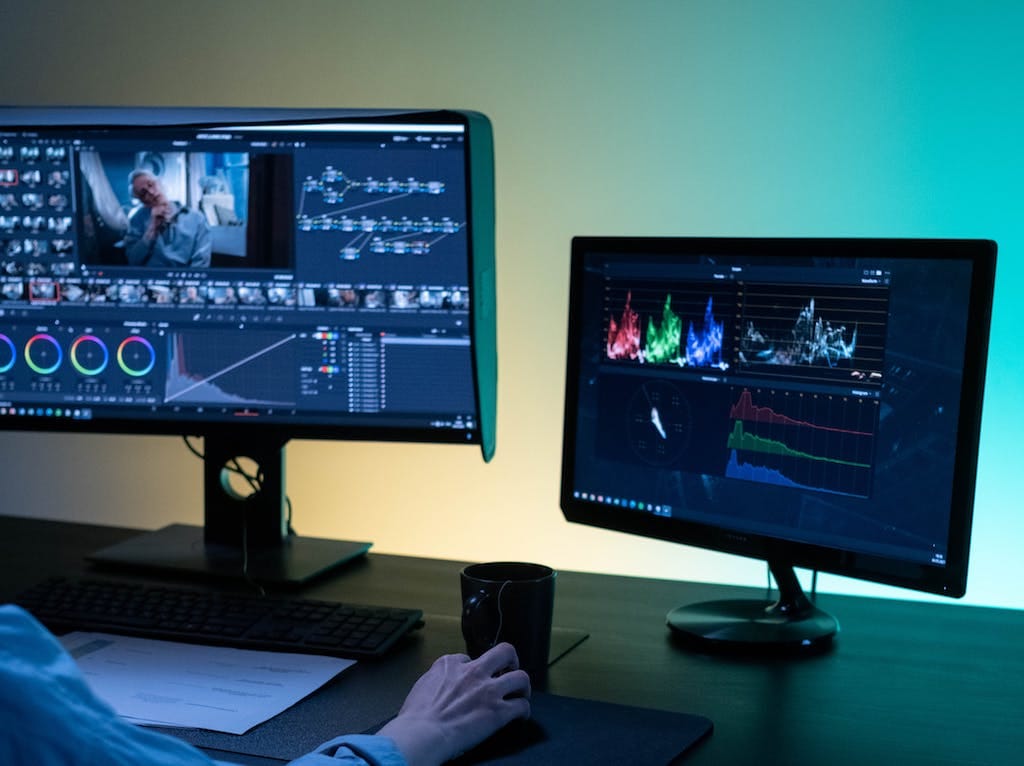9 Tips for Efficient Sound Editing Workflow and Productivity

Excellent sound quality requires a high degree of audio editing skills and experience. However, it also requires a seamless, robust workflow that enables the editor to maximize those skills to full effect.
Knowing how to use a sound editing program is one thing, but fully utilizing it only becomes possible when the person behind the equipment has a disciplined approach to personal productivity, which enables them to draw out the true beauty and complexity of a musical piece.
An efficient approach to productivity is essential for all types of disciplines, both creative and technical. So, how does a sound editor perform their role in the most effective and advantageous way possible? These nine useful tips cover exactly that.
1. Break big projects into smaller segments
There’s an old adage about tackling large projects that’s very applicable here.
“How do you eat an elephant? One bite at a time.”
Even the most daunting, high-stakes projects are easy to manage when you take a slow-and-steady stance. When approaching any big task, it’s useful to break it up into smaller, more digestible pieces. That way, you can move through your to-do list in a more productive and methodical way.
Intimidatingly complex or intensive projects can cause stalling and procrastination. But if you compartmentalise one big project into, say, ten small steps, it can help you work through the bulk of it without becoming overwhelmed.
2. Set your own time limits
Sometimes, the best way to improve productivity is to enforce more structure around your relationship with time.
Instead of just working mindlessly on an audio segment throughout the day, set yourself a series of time limits during which to complete certain tasks or details. Having a deadline can push you to do your best work without procrastinating.
3. Ask for advice or feedback from colleagues
All industries have special techniques and approaches to improve productivity in their field. Your co-workers might have some useful insights for you about how to embrace a better workflow.
Ask your colleagues, managers, or industry peers to share tips about how they enhance productivity in the sound editing sphere. This is especially useful if you work remotely or if you are still building experience. Collaboration and communication with others is almost always useful for productivity.
4. Make sure you have access to the right gear
The right gear and equipment are crucial for maximizing efficiency in the sound mixing industry. As a very technical and technology-adjacent industry, low-quality tools and software programs can cause serious issues for both productivity and sound quality, leading to overall poor results.
On the other side of that coin, proper sound gear can be a gateway to beautiful, crisp, and highly efficient workflows that transform how much you can accomplish during work hours.
If you work for a company, bring up the need for better-quality audio editing software with your superiors. If you are an independent sound editor, you will need to save up to invest in your own.
5. Learn shortcuts
Sometimes, a shortcut is the best route for an efficient workflow. Fortunately, most sound editing software is teeming with amazing, time-saving shortcuts that can streamline your productivity strategy and make audio editing a much simpler and easier process. Some of the best shortcuts are:
- Start/stop playback: spacebar
- Import audio: [Shift + Ctrl/Cmd + I]
- Shuffle mode: [F1] or [Option + 1]
- Trimmer tool: [F6] or [Ctrl/Cmd + 2]
- Scrubber tool: [F9] or [Ctrl/Cmd + 5]
Different audio editing software programs have different features and shortcuts available, so it’s always worth looking into which ones you have access to before rethinking your approach to workflow.
6. Keep your assets organized
Organization is the enemy of chaos. Help yourself manage sound bites and audio layers by organizing and categorizing them into clear sections and folders. In doing so, you don’t need to spend hours searching for random elements while you work. This makes editing and mixing music a much more streamlined task.
Utilize the power of digital organization tools and bring clarity into your workflow process. When everything is labeled, listed, and saved in clearly-defined sections, it becomes much easier to navigate complex sound segments and edit them in a way that’s consistent and efficient.
7. Have (and maintain) a clear vision
Aimlessness and lack of clarity can derail any workflow, especially when it comes to sound mixing and editing. Instead of just going with the flow, try adding more structure to your process by establishing a clear idea of what you are trying to achieve through your hours.
For instance, if you are editing a classical instrumental piece of music, find out as much as possible about the ideal end result from your client and have references available for when you feel lost.
8. Minimize distractions
Because sound is such a nuanced and complex sense, it requires your full attention and focus. For this reason, distractions can be detrimental to your productivity while editing audio bits for work.
Minimize distractions by working in a quiet area and by reducing the amount of media you consume throughout the day. The fewer distractions, the easier it is to focus.
9. Cleanse your senses
Working in the audio field is a very sensory experience. Sound is a sensitive medium that can be hard to distinguish when you spend hours focusing on it every day.
If you’re struggling to feel productive, try giving your brain ample breaks from the audio you’re currently working on to cleanse its perception of sound and refresh your mind throughout the day. Try listening to different music or even embracing total silence for a few minutes at a time between work.
Conclusion: Create A Workflow That Gets Results
Sound mixing and editing play a crucial role in the development and production of a piece of music. But even the most talented and experienced sound editors may struggle to refine a piece to its highest potential without the discipline of a strong work ethic and a sustainable approach to productivity.
With these tips, anyone in the sound editing and mixing industry can adopt a better workflow and create and enhance music that’s every bit as pleasing to listen to as it is efficiently produced.





